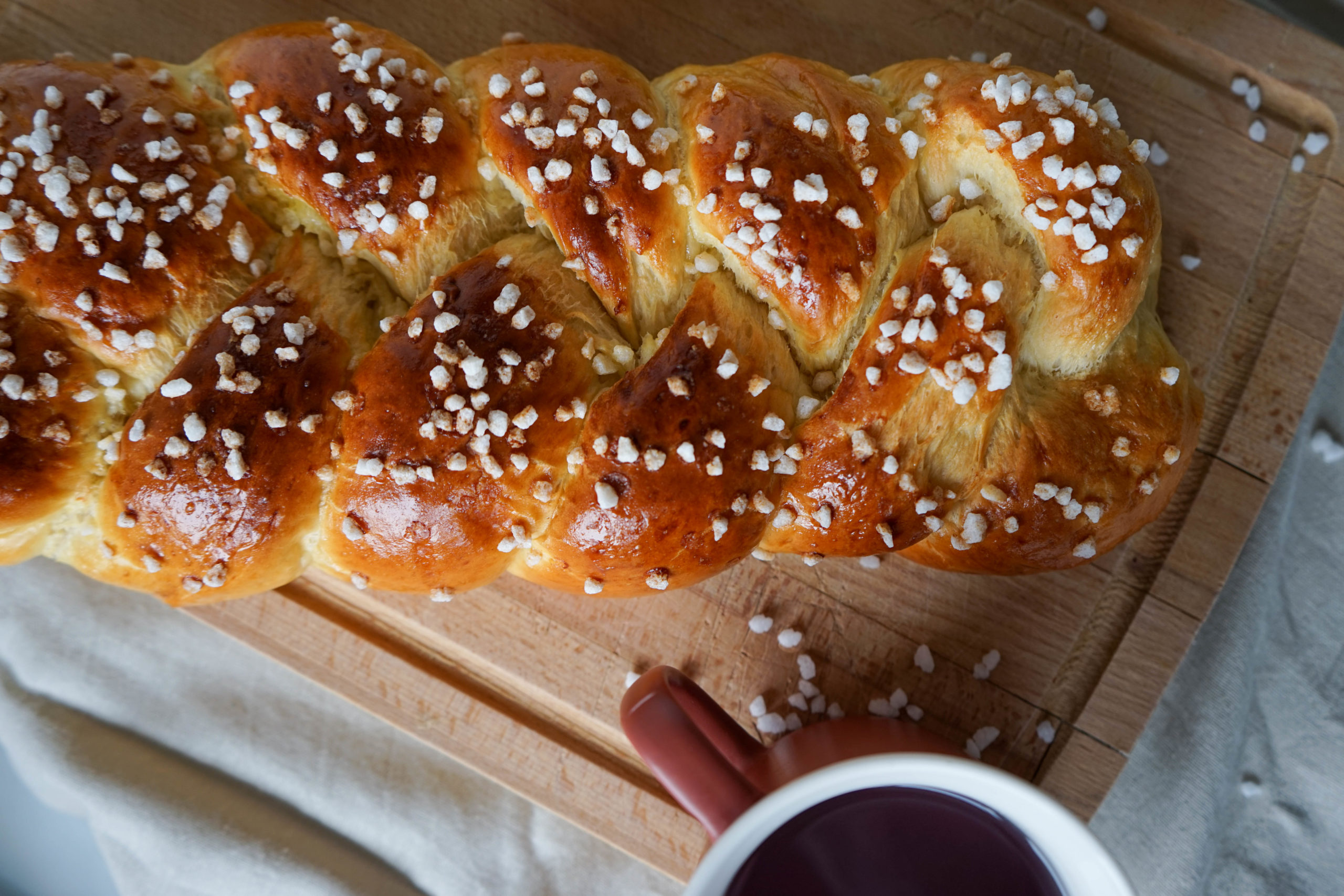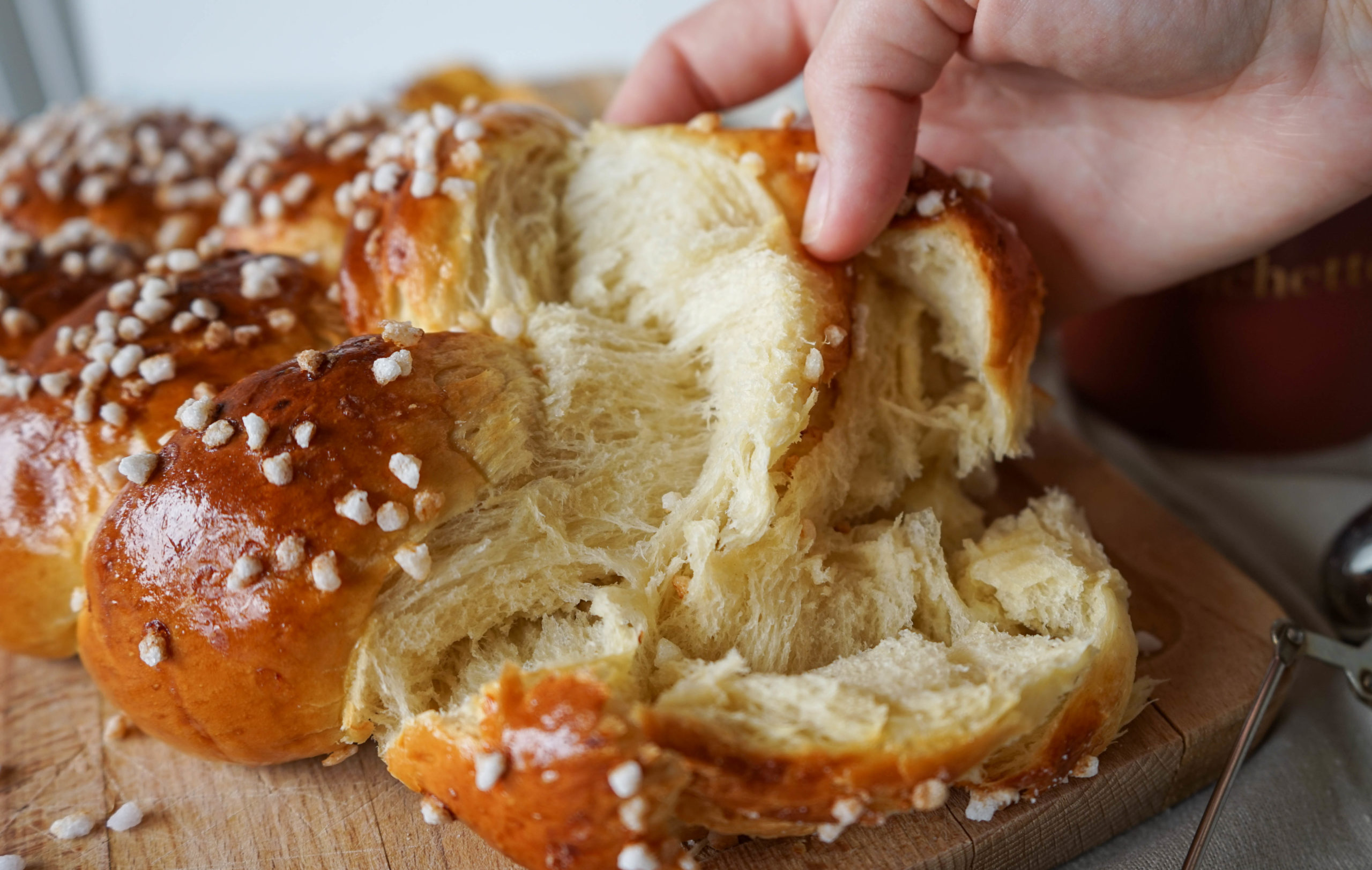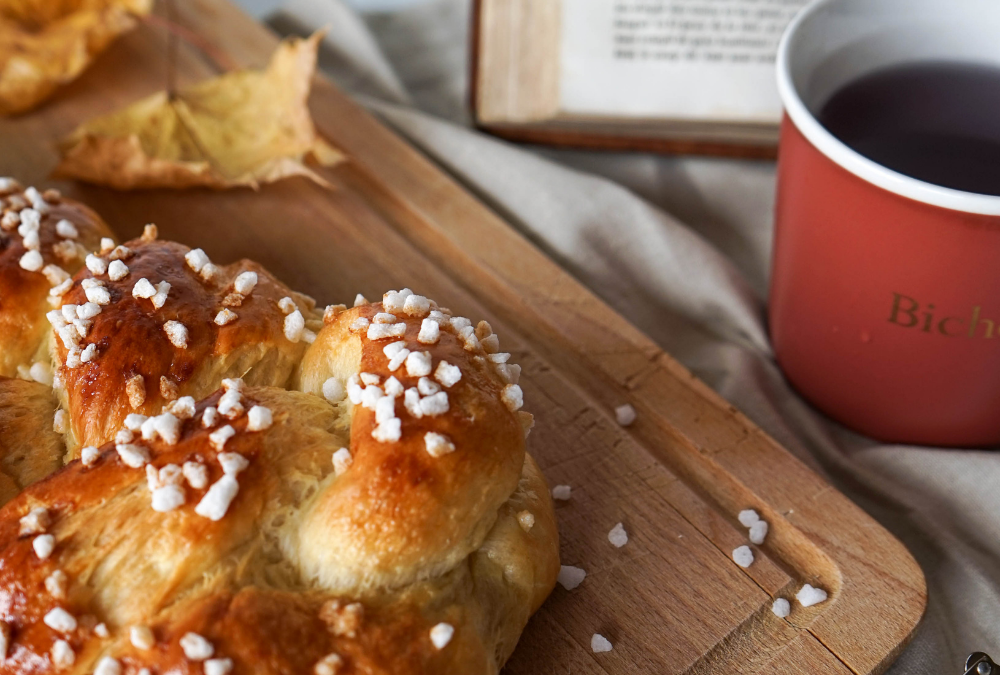How to Make French Brioche: A Rich, Buttery Breakfast Classic
There’s nothing like the comforting aroma of freshly baked brioche wafting through the kitchen. This golden, pillowy bread is a staple in French households—served plain, with butter and jam, or transformed into decadent treats like French toast or dessert puddings.
In this guide, I’ll show you step-by-step how to make authentic French brioche at home. With the right technique and patience, you’ll create a soft, buttery bread that rivals any French bakery.
Servings
2 brioches
Prep time:
30min
Cook time:
20min
Resting time:
3h
Why You’ll Love This Brioche Recipe
- ✅ Authentic and traditional – rooted in French pastry heritage
- ✅ Buttery and fluffy – a true viennoiserie with a rich crumb
- ✅ Versatile – enjoy it plain, toasted, or as the base for desserts
- ✅ Perfect for breakfast or afternoon tea – an essential for a classic French goûter

Ingredients
- 500g of all-purpose flour
- 80g of sugar
- 8g of salt
- 25g of fresh yeast
- 2 eggs
- 180g of milk
- 100g of butter
Step by Step Instructions
Prepare the Dough
In a stand mixer or large bowl, combine flour, sugar, salt, and yeast. To protect the yeast, cover the salt and sugar with a bit of flour before adding it.
Add the eggs and milk, then mix on medium speed for about 10 minutes, until a rough dough forms and pulls away from the bowl.
Reduce the mixer speed and gradually incorporate the pieces of butter until the dough becomes smooth, elastic, and slightly glossy—a sign of proper gluten development.
First Rise
Cover the bowl with a damp cloth and let the dough rise in a warm, draft-free spot until it doubles in size (about 1½ hours).
⚠️ Important: Keep the dough below 28°C (82°F)—higher temperatures will cause the butter in the dough to melt, affecting texture.
After rising, gently deflate the dough by pressing from the top down. Cover and refrigerate for 30 minutes—this firms the butter slightly and makes shaping easier.
Shape the Brioche
Punch down the chilled dough and divide it according to your desired loaf or bun size. Place in a buttered loaf pan, or shape individual buns for a classic brioche à tête.
For a braided brioche:
- Roll the dough into a rectangle with a rolling pin.
- Using a large knife, cut the rectangle into three long strips.
- Roll each strip lightly to form even strands.
- Braid the strands directly on a baking mat, then tuck the ends underneath for a neat finish.
Second Rise
Let the shaped dough rest again for 1 hour, allowing it to puff up beautifully. This second proofing is key to achieving a light, buttery crumb.
- If your oven has a proofing or steam setting, set it to 28°C (82°F) for best results.
- Otherwise, place the brioche in a turned-off oven with a bowl of warm water on the bottom rack. Close the door to create gentle humidity for an ideal rise.

Bake to Golden Perfection
Preheat the oven to 180°C (350°F). Brush the brioche with beaten egg for a shiny, golden crust.
Bake for 25–30 minutes, or until the top is deeply golden and the kitchen smells rich and buttery.
Allow to cool slightly before slicing to maintain its soft, delicate texture.

Serving Ideas
- Toast slices lightly and spread with butter and jam
- Make brioche French toast for an indulgent breakfast
- Use it as a base for bread pudding or gourmet sliders
- Pair with a rich chocolate ganache for a decadent dessert
Storage & Preservation
- Room Temperature: Wrap cooled brioche in plastic or store in an airtight container for up to 2 days
- Freezing: Slice and freeze for up to 2 months. Reheat gently in the oven to restore its texture
Frequently Asked Questions
Can I make brioche ahead of time?
Yes! Brioche freezes exceptionally well. Slice it before freezing for easy portioning and quick thawing.
What’s the difference between brioche and regular bread?
Brioche is richer than standard bread due to butter and egg content, making it softer, more flavorful, and closer to a pastry than a basic loaf.
Can I add flavors to brioche?
Absolutely. Orange blossom water, chocolate chips, or dried fruits are common variations that give your brioche a unique twist.
👩🏼🍳 Want to Elevate Your Dessert Offerings with Authentic French Classics?
If you’re looking for ways to enhance your pastry experience for guests and create unforgettable moments:
Mille-Feuille
Crisp layers of golden puff pastry and silky vanilla cream—French pâtisserie at its finest.
Macarons Course
Crisp, chewy, and impossibly elegant—unlock the secrets to this iconic French delicacy.
Chocolate & Salted Caramel Tart
A rich, indulgent dessert where silky chocolate meets golden salted caramel.

YOUR FREE EBOOK!
- 14 free pages full of advices to master the art of French tarts.
- Our « Foolproof » pie crust recipe
- 5 delicious tart recipes to use it
- A delicious salty version: The French Quiche






